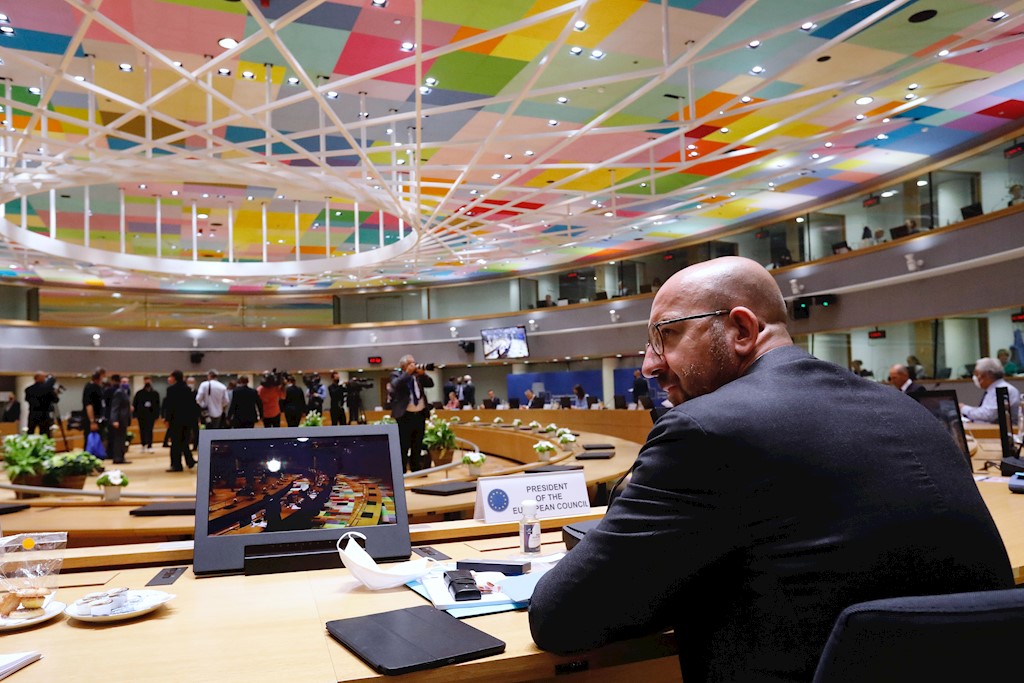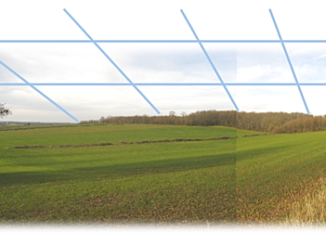
Oliver Moore, additional research via Pour Une Autre Pac; edited 30/07/2020 at 12.00 CET with final Next Steps section.
After almost five days of intense meetings, EU Leaders agreed on a seven year budget and recovery package yesterday. This includes the MFF (multiannual financial framework, or typical EU budget) of E1.07 Trillion, plus a specific pandemic recovery package of E750 billion, split almost evenly between grants (E390bn) and loans (E360bn).
E750bn is the biggest ever issuance of joint European debt, to be borrowed on international markets.
A group of four or five member states (Netherlands, Austria, Sweden, Denmark and sometimes Finland) had held out for a more modest MFF. These member states were initially opposed to a recovery package at all, were then opposed to a recovery package weighted towards grants rather than loans as the Commission had proposed – E500bn grants to E250bn loans was the earlier Commission proposal. They also wanted a conditional rule of law clause included.
The latter was opposed by Hungary and Poland, and was in the end largely watered down into meaningless, without having any significant relation to the monies agreed.
The frugal four member states did gain rebates (repayments), while the balance between grants and loans reflects the preference to limit recovery spending.
A number of flagship Commission priorities have been impacted in health, science and climate. These include EU Green Deal or Green Deal relationed priorities such as the Just Transition fund – down from E40bn to just 10bn. Scientific research via the Horizon research programme, InvestEU programme and the Connecting Europe facility were cut from E210bn to E132bn – E75.9bn of this remaining total is for Horizon. Funding on migration, border management, security, defence neighbourhood and internal development were all also cut, while EU4Health, designed to deal with the consequences of the covid-19 pandemic, was scrapped.
Read the 21 June 20 EUCO final conclusions (english) in full
CAP impacted, Pillar 2 takes a hit
The Common Agricultural Policy (CAP) is set at E336bn in the MFF, E344bn including the appropriations from the recovery plan (slightly down on the previous proposal of E348.5bn). The Pillar 1 budget is E259bn (almost identical to the E258bn in the previous proposal), of which a maximum of E240bn is for direct payments and a minimum of E18bn is for the common market organisation.
The European Agricultural Fund for Rural Development (EAFRD, or Pillar 2) will have a budget of E78bn (compared to E75bn in the previous proposal but with more appropriations from the recovery plan). Pillar 2 had, at various stages in the past few months, been proposed for both increases and decreases in funding. In the end, it sees the proposed extra E15bn in funds cut in half to 7.5bn of additional payments.
There is no time set for when this extra money can be spent, so it may be as late as 2023 before it can start.
Top ups to Pillar 2
15 countries including France have obtained a larger share of the EAFRD. These Pillar 2 environmental top ups will be allocated as follows: Belgium (E100 million), Germany (E650 million), Ireland (E300 million), Greece (E300 million), Spain (E500 million), France (E1 600 million), Croatia (E100 million), Italy (E 500 million), Cyprus (E 50 million), Malta (E 50 million), Austria (E 250 million), Slovakia (E 200 million), Slovenia (E 50 million), Portugal (E 300 million), Finland (E 400 million)
Transfers between Pillars 2
For the transfer of appropriations between pillars the general rule is for 25% transfer possible in both directions (from P1 to P2 or from P2 to P1).
- Possible additional transfers from P1 to P2: 15% if it is for environmental or climatic measures and 2% if it is for support for young farmers
- Possible additional transfer from P2 to P1: 5% for Member States whose value of payments per hectare is less than 90% of the EU average
Co-financing rate of the 2nd pillar
a) 100% for appropriations transferred from the first pillar
(b) 85% for the least developed regions
(c) 80% for ultramarine regions + MAECs + areas with environmental challenges (Natura 2000 in particular) + non-productive investments + LEADER + European Innovation Partnership (EIP)
d) 65% for the Natural or area specific constraints
(e) 60% for regions in transition
(f) 43% for all the rest
Climate, Capping and Convergence
40% of CAP budget is to be allocated to climate measures ( though as we’ve reported on here before, this in itself uses dubious metrics). There is a cap on direct payments, which are now called Basic Income Support for Sustainability (BISS). This is ostensibly set at E100,000 (excluding redistributive payments, ecoscheme, coupled aid, etc.). However, it is now optional for member states and not compulsory as initially proposed, and will also allow for wages equivalent reductions, which will limit the impact of capping.
External convergence continues slowly, with a 50% closing of the BISS gap by 2027. All member states with direct payments per hectare below 90% of the EU average will close the gap between their current average level of direct payments and 90% of the EU average by 50%, spread evenly over the six years of the programming period (2022 to 2027). In addition, all member states will have to reach at least E215 per hectare by 2027.
Next Steps
Technically, the Parliament must also approve this deal. While it passed a resolution in opposition to part of the deal, the Parliament is unlikely to vote against it. Similarly, it must be approved by national Parliaments. When this will start however, is unclear. A one or, if required, (as seems likely) two year CAP transitional budget is now also in place, so the next CAP period may start in January 2023.
Commission’s Dodgy Calculations Improve CAP’s Climate Impact
CAP & the Global South: National Strategic Plans – a Step Backwards?
CAP Strategic Plans on Climate, Environment – Ever Decreasing Circles
European Green Deal | Revving Up For CAP Reform, Or More Hot Air?
Climate and environmentally ambitious CAP Strategic Plans: Based on what exactly?
How Transparent and Inclusive is the Design Process of the National CAP Strategic Plans?






1 Trackback / Pingback
Comments are closed.